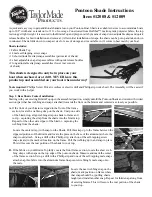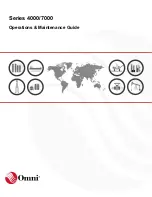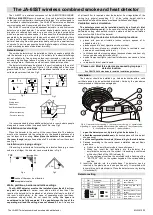
18
3
The Child
CR
i
S
is
™
Manikin is a completely modular system that lets you create a manikin to suit your
needs. It is ideal for ACLS, nursing, paramedic, and EMT training. This system features a completely
functional CPR manikin of a five-year-old child with
Life
/
form
®
Airway Management Trainer, IV Arm,
Blood Pressure Arm, Defibrillation Chest Skin, and Intraosseous Infusion/Femoral Access Leg.
The Child
CR
i
S
is
™
Manikin allows you to simulate resuscitation; start IVs; check and evaluate blood
pressure; practice airway management skills including intubation and suction; and perform defibrillation,
CPR, and intraosseous infusion and femoral access.
ASSEMBLY OF YOUR CHILD
CR
i
S
is
™
MANIKIN
To facilitate packing, your manikin comes with the arms and legs unattached.
To connect the arms to the torso, place each in a position such that the hand is above the head.
(See figure 1.)
Align the arm fitting with the torso socket and plug the arm into place. Finish by rotating the arm forward
so it lies along the side of the body.
To connect the legs to the torso, simply slide the waist pin (supplied) through the torso and legs, pinning
the legs in their correct position.
(See figure 2.)
USING THE MANIKIN
Each part of the manikin is covered under a different section of the instructions. Go to the table of con-
tents to locate the area of the manikin you choose to set up and use. You can set up as many components
as necessary to fit your training situation.
CLEAN UP PROCEDURES
1.
Remove and discard any bones that have been charged with blood mixture.
2.
Remove leg skins and use paper towels to completely wipe the simulator and remove any “blood” or
lubricating agent.
3.
Drain the syringe and discard any of the unused blood mixture.
4.
Use clean tap water to flush and clean the syringe and tubing. Allow to dry.
GENERAL INSTRUCTIONS FOR
FEMORAL ACCESS USE
1.
Prepare the blood mix by filling one of the pint
bottles with water and shaking until mixed.
(Do not add K-Y Jelly to the femoral blood mix.)
2.
Be sure the clamp on the IV bag tubing is
closed, and hang the bag no more than 18"
above the leg. Pour the blood mix from the
bottle into the IV bag.
3.
Attach the fitting end of tubing to the access site
tubing.
(See figure 7.)
4.
Open the clamp on the IV bag.
5.
To charge the vein, make your first needle inser-
tion in the vein, and pull back on the syringe to
remove air from the vein. Repeat until “blood” is
withdrawn. The vein is now charged, and subse-
quent insertions will produce an immediate flow
of “blood.”
CLEAN UP PROCEDURES
1.
Close the clamp on the IV bag, pull the fitting from the femoral access tubing, and let the access
tubing drain.
2.
Drain the bag into the pint bottle by placing the IV bag tubing end into the bottle and opening the
clamp.
3.
When the bag is empty, close the bottle and flush out the IV bag with clean tap water. Let dry.
SUPPLIES/REPLACEMENT PARTS FOR THE INTRAOSSEOUS INFUSION/FEMORAL ACCESS LEG
LF03618U
Intraosseous Infusion Bone Replacement Kit
LF03619U
Intraosseous Infusion Left and Right Leg Skin Replacements
LF01111U
Intraosseous Infusion Simulated Blood Mixture
LF03626U
Femoral Injection Pad Replacement
LF00845U
Life
/
form
®
Venous Blood, 1 quart (Femoral Access)
LF00846U
Life
/
form
®
Venous Blood, 1 gallon (Femoral Access)
Figure 1
Figure 2
Figure 7
HC190001INM14.indd 5-6
2/20/19 11:23 AM




































